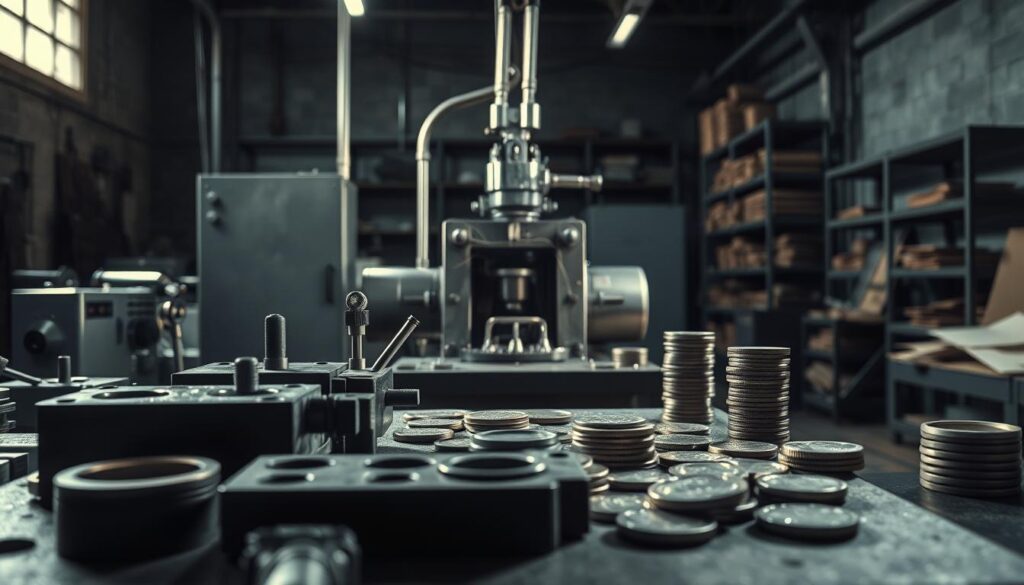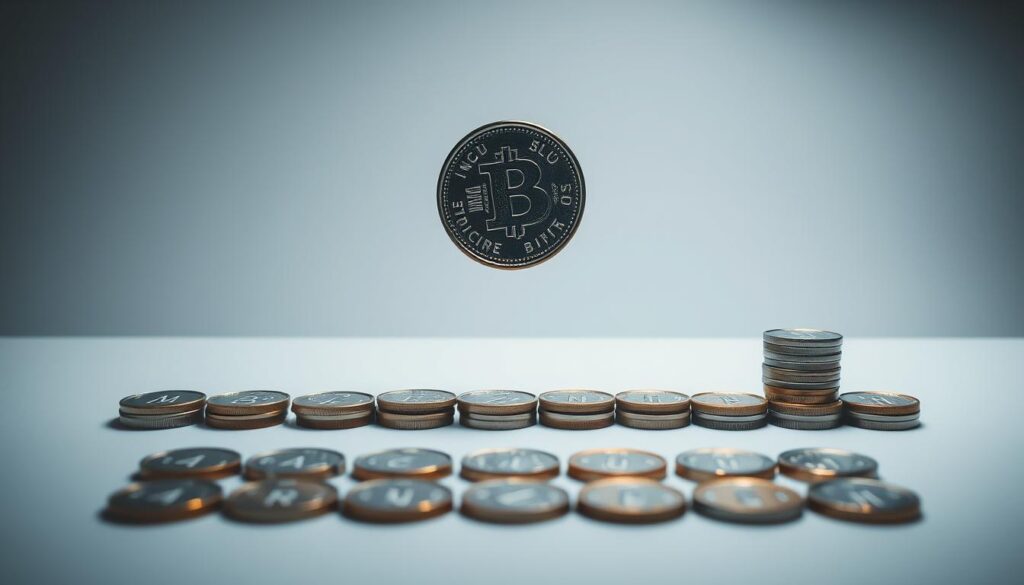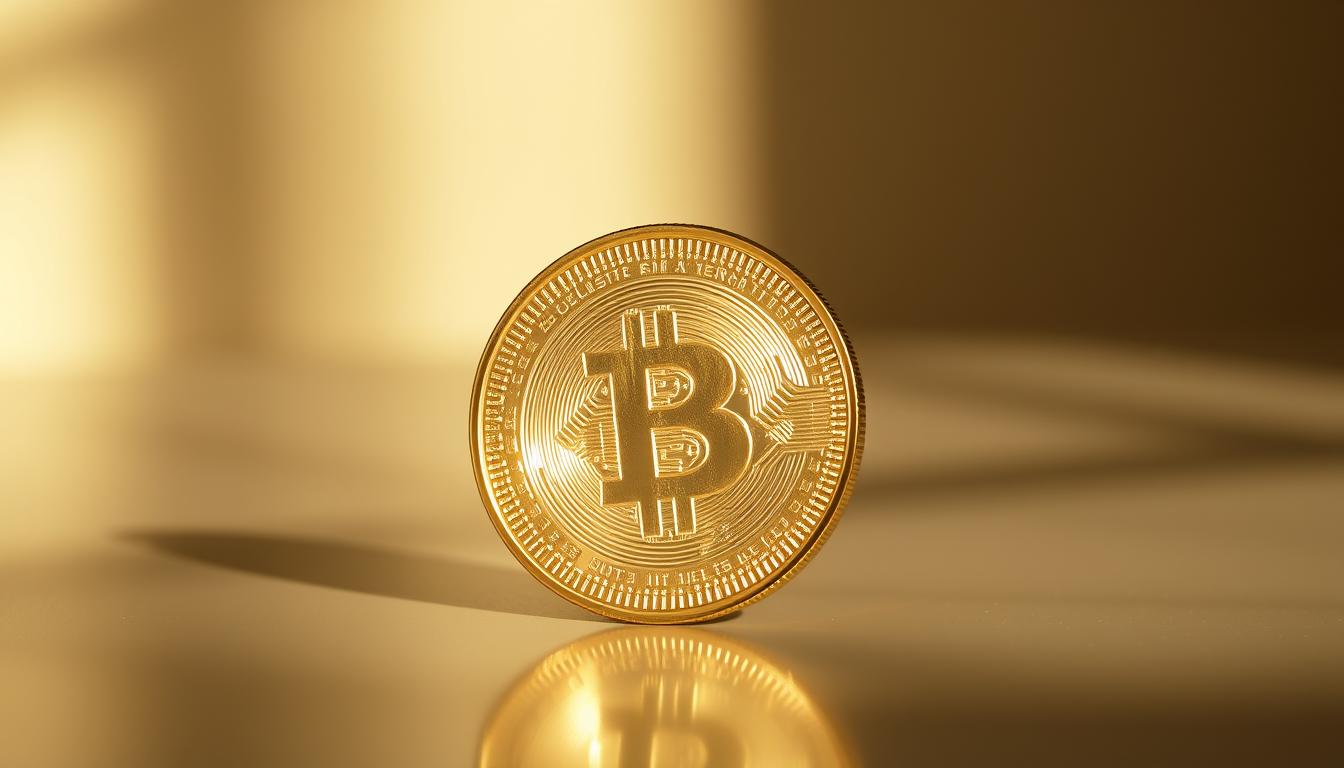The idea of a coin always landing on heads is intriguing. It has caught the attention of people everywhere. This concept is linked to biased coins, made to change the odds of a toss.
Many, including magicians and scientists, find this idea captivating. It has sparked curiosity in many.

Exploring biased coins and the science behind them is complex. It involves the physics of flipping coins and using weighted coins. By looking into the history and science, we can understand more about this phenomenon and its uses.
Introduction to Biased Coins
Biased coins, like the one that always lands on heads, are used in magic and entertainment. They make us think about probability and chance. As we explore biased coins, we’ll see how they are used and their impact on our view of the world.
Key Takeaways
- The coin that always lands on heads is a fascinating phenomenon that has captured the imagination of people around the world.
- Biased coins are designed to manipulate the odds of a coin toss, making them a popular tool for magicians and entertainers.
- The study of biased coins involves the physics of coin flipping and the use of weighted coins.
- The coin that always lands on heads has many applications, including magic and entertainment.
- Biased coins raise questions about the nature of probability and the role of chance in our lives.
- The use of biased coins has sparked the interest of scientists and curious minds, leading to a deeper understanding of the phenomenon.
The Mystery Behind One-Sided Coin Tosses
Most people think coin flipping is always a 50/50 chance. But, this isn’t always true. By using probability manipulation, you can make a coin always land on heads. This is done by understanding the science of coin flipping, like air resistance and gravity.
To manipulate probability, you need to break the 50/50 rule. By changing how the coin moves, you can make it always land on heads. This can be done in several ways, like:
- Weighting the coin to favor one side
- Changing the coin’s surface to affect air resistance
- Using a special flipping technique to control the coin’s spin
These methods can make a coin always land on heads, going against the odds. The science of coin flipping is complex. Knowing what affects the outcome is key to making a biased coin.
Understanding coin flipping and probability manipulation lets you make a coin always land on heads. This is useful in magic tricks and games of chance.
Historical Uses of the Coin That Always Lands on Heads
The coin that always lands on heads has a rich history in magic and entertainment. Magicians and performers have used it for centuries to amaze their audiences. Magicians find it fascinating for adding mystery to their shows.
In entertainment, magic tricks are a big part of live shows. The secret use of biased coins in these tricks is well-kept. Yet, by looking into the coin’s history, we can understand its role in today’s entertainment.
- Street performers use them for impressive feats of chance and probability.
- Stage magicians add them to their acts for mystery and illusion.
- Close-up magicians use them for detailed and intricate tricks.
The history of biased coins in magic and entertainment is long and interesting. Exploring this history helps us appreciate the art of magic. It shows how biased coins have been used to create unforgettable performances.
The Physics Behind Weighted Coins
The physics of coin flipping is quite complex. It involves the center of mass, material properties, and surface tension. These factors are key to making a biased coin that always lands on heads. Weighted coins are made to change the odds of landing on a certain side.
For weighted coins, the goal is to shift the center of mass. This makes it more likely for the coin to fall on one side. Adding weight to one side changes the balance point. The coin’s material, like density and size, also affects its behavior.
Key Factors Influencing Coin Behavior
- Center of mass manipulation
- Material properties and their effects
- Surface tension and air resistance
By studying the physics of coin flipping, we can make a biased coin. The use of weighted coins is interesting in magic and entertainment. It allows for controlling probability, which is very useful.
Manufacturing Techniques for Biased Coins
Making biased coins requires different manufacturing techniques. One way is to use a weighted core, like metal or plastic. This core is then covered with a layer of material, such as copper or silver, to look and feel like a real coin.
When making biased coins, the core’s weight and size matter. So does the material of the outer layer. By changing these, you can make a coin that lands on heads more often. Here are some common manufacturing techniques for biased coins:
- Weighted core method: This uses a dense core to make one side heavier.
- Material manipulation: Using different materials for the core and outer layer changes the coin’s balance and landing probability.
- Design modification: Changing the coin’s design affects its aerodynamics and balance, making it land on one side more.

These manufacturing techniques help create biased coins with different levels of bias. The choice of method depends on how biased you want the coin to be and its intended use.
Common Methods to Create a Coin That Always Lands on Heads
Creating a coin that always lands on heads is quite interesting. There are many ways to do this. These methods include changing the coin’s design, weight, or surface to get a biased result. One well-known method is the double-sided technique, where a coin has two sides with different designs or weights.
Another method is to adjust the coin’s weight by adding or removing material. This can be done by drilling a hole in one side or adding a small weight. You can also change the coin’s surface to influence how it lands. This might involve adding a texture or altering the coin’s shape.
These methods are often used in coin tricks to make it seem like a fair coin toss is happening. Magicians use these techniques to make a coin always land on heads, making it seem magical. Tricks include flipping a coin to always land on heads or using a coin to guess the result of a toss.
Here are some key points to consider when creating a coin that always lands on heads:
- Use a double-sided technique to create a coin with two different sides
- Use weight distribution methods to create a biased weight distribution
- Use surface modification approaches to change the surface of the coin
- Practice and perfect your coin tricks to create a convincing illusion
By applying these methods and honing your coin tricks, you can create a believable illusion of a fair coin toss. This will amaze your friends and family with your magical abilities.
Legal and Ethical Considerations
The use of biased coins brings up key legal considerations, especially in games of chance. In many places, using biased coins is against the law and can lead to harsh penalties.
There are also big ethical implications to think about. The results of a coin toss can be very important. Using a biased coin can be seen as unfair and dishonest. It’s crucial to think about the ethical implications of using biased coins and the possible risks and outcomes.
Some important points to keep in mind about legal considerations and ethical implications are:
- Understanding the laws and regulations about using biased coins in games of chance
- Knowing the possible consequences of using biased coins, like legal and financial penalties
- Thinking about the ethical implications of using biased coins and how it affects others
In conclusion, using biased coins raises big legal considerations and ethical implications that need careful thought. By knowing the laws and understanding the possible outcomes, people can make smart choices and stay safe.
Professional Applications in Magic and Entertainment
The art of magic is captivated by the idea of a coin always landing on heads. Many professional magicians have made this concept a key part of their magic performances. They use biased coins in various tricks, from close-up to grand illusions.
Magicians have developed many techniques to make it seem like the coin always lands on heads. This has become a crucial part of their craft. It’s not just about the trick itself but how it’s presented.
Some magicians have even made their careers around this idea. They use misdirection, sleight of hand, and clever props to amaze their audiences. Whether it’s a simple coin flip or a complex illusion, biased coins are essential.
If you want to use the coin that always lands on heads in your magic performances, here are some tips. First, practice until it feels natural. This builds confidence and ensures a smooth show. Also, use misdirection and storytelling to make the illusion more engaging.
- Practice the technique until it becomes second nature
- Use misdirection and clever storytelling to enhance the illusion
- Consider the use of clever props and set design to create an immersive experience
By following these tips, magicians can create unforgettable shows. Whether it’s a small trick or a big illusion, biased coins make a lasting impression.
Scientific Studies on Biased Coin Behavior
Research in probability has deepened our understanding of biased coins. Scientific studies reveal that many factors can affect a coin toss. These include the coin’s design and how it’s tossed. Researchers have created probability models to forecast a biased coin’s actions.
Some key findings from these studies include:
- Weighted coins can greatly increase the chance of landing on one side.
- The coin’s surface and material also play a role in its flight.
- Specific tossing methods can sway the coin’s outcome.
These discoveries are crucial for grasping how biased coins function. They help us see how to make a coin always land on heads. By using probability models on scientific studies data, researchers better understand what affects a biased coin.

The study of biased coins is both intriguing and complex. It has shed light on many factors that influence a coin toss. By keeping up with scientific studies and probability models, researchers can uncover more and make more precise predictions about biased coins.
Conclusion: The Enduring Appeal of the Perfect Heads Flip
As we wrap up our look at the “coin that always lands on heads,” it’s obvious why it’s so captivating. It combines science, magic, and entertainment in a way that grabs everyone’s attention. This topic has been fascinating people all over the world.
If you’re into science, magic, or just love learning about the odds, this journey has been fun and educational. We’ve learned about how to make a coin always land on heads. This includes changing its center of mass, its material, and its surface.
In closing, the magic of the perfect heads flip is its ability to surprise us and make us think differently. It shows us the power of creativity and our curiosity about the world. The coin that always lands on heads is a symbol of human ingenuity and our endless quest for knowledge.
FAQ
What is the mystery behind one-sided coin tosses?
The mystery of one-sided coin tosses comes from probability manipulation. It’s possible to make a coin always land on heads by understanding probability. This makes the coin biased.
How do magicians and performers use the coin that always lands on heads?
Magicians and performers have used the coin that always lands on heads for ages. It’s a secret trick to amaze people. Many keep their methods hidden.
What are the physics behind weighted coins?
The physics of weighted coins is complex. It involves center of mass, material properties, and surface tension. These factors help create a coin that always lands on heads.
What are the common methods used to create a coin that always lands on heads?
There are a few ways to make a coin always land on heads. These include the double-sided technique, weight distribution, and surface modification. These methods change the coin’s design to bias it.
What are the legal and ethical considerations surrounding the use of biased coins?
Using biased coins can be illegal in many places. It’s especially banned in games of chance. It also raises ethical questions, especially when the outcome matters a lot.
How have biased coins been used in professional magic and entertainment?
Biased coins are a staple in magic and entertainment. Famous magicians and street performers use them to wow audiences. Learning from them can help you master the art of biased coins.
What scientific studies have been conducted on biased coin behavior?
Scientists have studied how biased coins behave. They look at the probability of landing on one side. This research helps us understand and use biased coins effectively.
